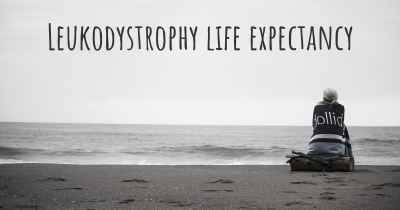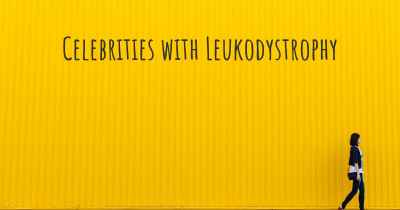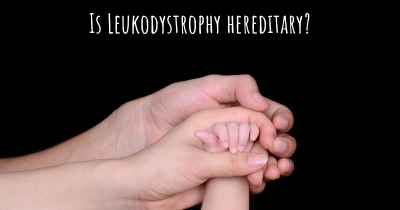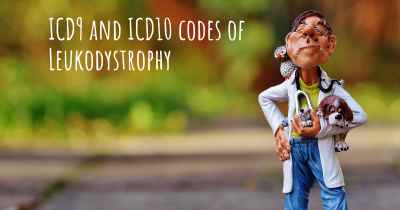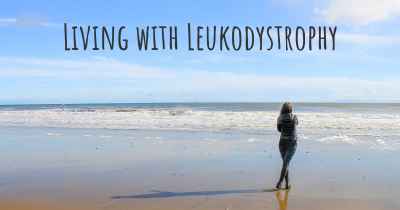Can people with Leukodystrophy work? What kind of work can they perform?
See how people with experience in Leukodystrophy give their opinion about whether people with Leukodystrophy can work and what kind of jobs are more appropriated for people with Leukodystrophy
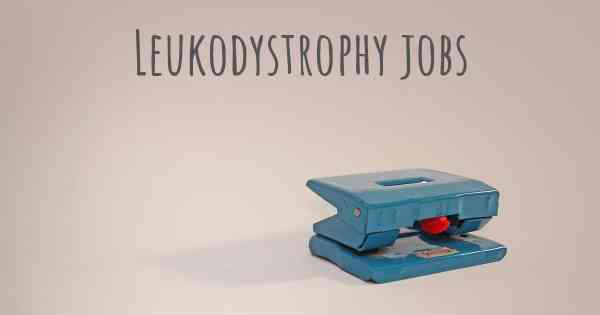
Can people with Leukodystrophy work? What kind of work can they perform?
Leukodystrophy is a group of rare genetic disorders that affect the white matter of the brain, leading to the progressive degeneration of myelin, the protective covering of nerve fibers. This can result in a range of neurological symptoms and disabilities, which can vary greatly depending on the specific type and severity of the condition.
Given the diverse nature of leukodystrophy and its impact on individuals, it is difficult to provide a definitive answer to whether people with leukodystrophy can work. The ability to work will largely depend on the individual's specific symptoms, functional limitations, and the progression of the disease.
Some individuals with leukodystrophy may be able to work, at least in the early stages of the disease or with appropriate accommodations. However, as the condition progresses, it can significantly impact a person's physical and cognitive abilities, making it challenging to maintain employment.
Types of work for individuals with leukodystrophy:
The type of work that individuals with leukodystrophy can perform will vary greatly depending on their specific abilities, limitations, and the stage of the disease. Here are some considerations:
- Flexible work arrangements: Individuals with leukodystrophy may benefit from flexible work arrangements, such as part-time work, job sharing, or telecommuting. These arrangements can help accommodate their fluctuating energy levels, physical limitations, and medical appointments.
- Desk-based or sedentary work: Depending on their cognitive abilities, individuals with leukodystrophy may be able to perform desk-based or sedentary work. This can include administrative tasks, data entry, writing, research, customer service, or other roles that primarily involve working with a computer or phone.
- Artistic and creative pursuits: Some individuals with leukodystrophy may have talents and interests in artistic or creative fields. They may excel in areas such as painting, drawing, writing, music, or other forms of expression that do not require extensive physical exertion.
- Advocacy and support roles: Individuals with leukodystrophy can contribute to society by working in advocacy and support roles. They can use their personal experiences to raise awareness, provide support to others affected by the condition, or work for organizations dedicated to leukodystrophy research and support.
- Entrepreneurship and self-employment: For some individuals with leukodystrophy, starting their own business or working as a freelancer may provide flexibility and autonomy. This allows them to tailor their work environment and schedule to their specific needs and abilities.
It is important to note that the progression of leukodystrophy can be unpredictable, and individuals may experience a decline in their abilities over time. This can impact their capacity to work and may require adjustments or changes in their employment situation.
Support and accommodations:
For individuals with leukodystrophy who wish to work, it is crucial to have appropriate support and accommodations in place. This can include:
- Flexible schedules: Allowing for modified work hours or breaks to manage fatigue or medical appointments.
- Physical accommodations: Providing assistive devices, ergonomic workstations, or modifications to the physical work environment to enhance accessibility.
- Assistive technology: Utilizing specialized software, voice recognition tools, or other assistive devices to facilitate communication and task completion.
- Job coaching and training: Offering specialized training, mentoring, or job coaching to help individuals with leukodystrophy develop and maintain their skills in the workplace.
- Emotional and psychological support: Providing access to counseling or support groups to address the emotional challenges that may arise from living with a chronic condition.
It is essential for employers to foster an inclusive and supportive work environment that values diversity and accommodates the needs of individuals with leukodystrophy. By providing appropriate support and accommodations, employers can help individuals with leukodystrophy maximize their potential and contribute meaningfully to the workforce.
Posted Aug 6, 2017 by cjackson1982 1500
Posted Aug 7, 2017 by Todd 2340
Posted Sep 24, 2017 by Leonor 400
